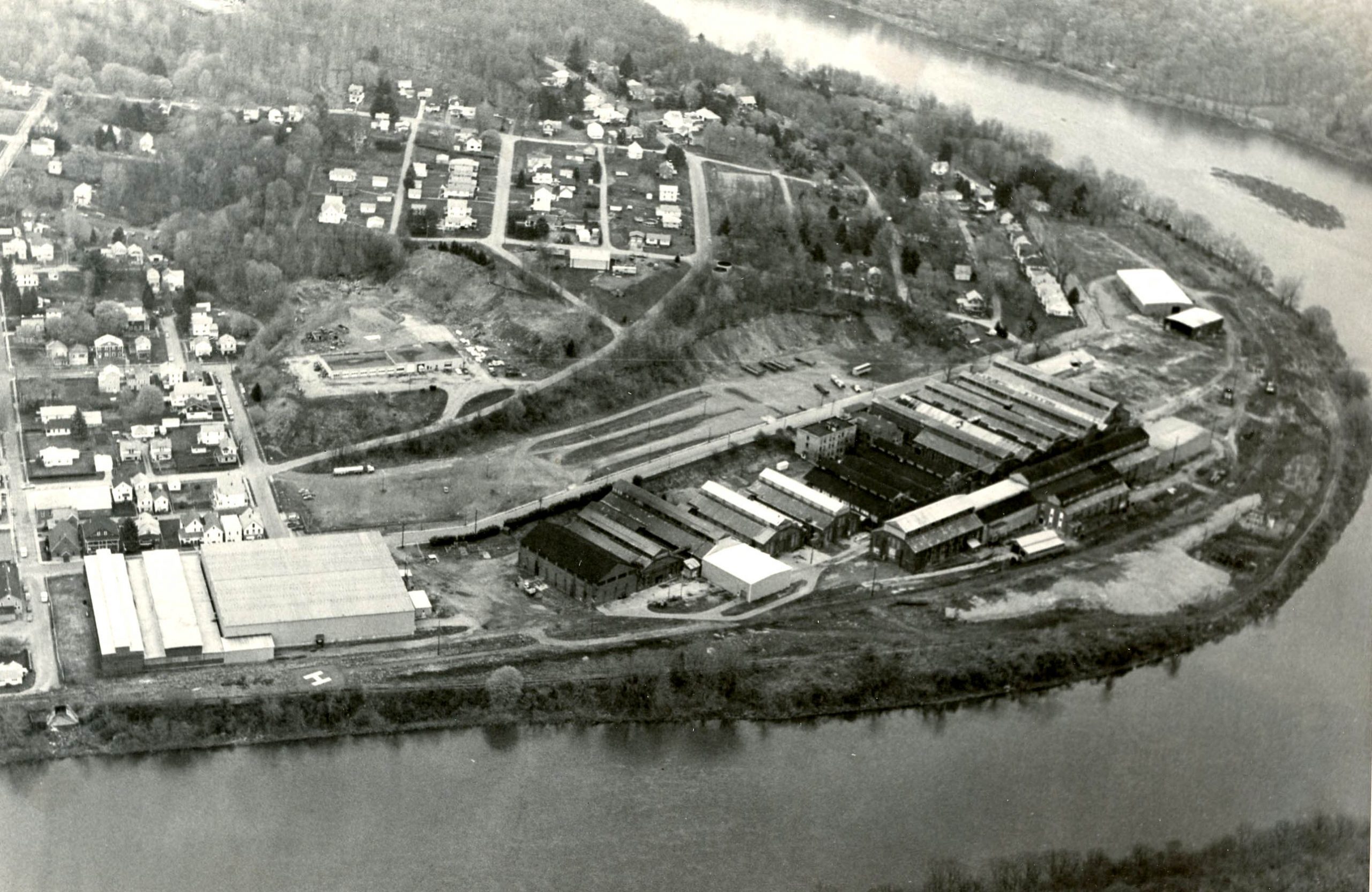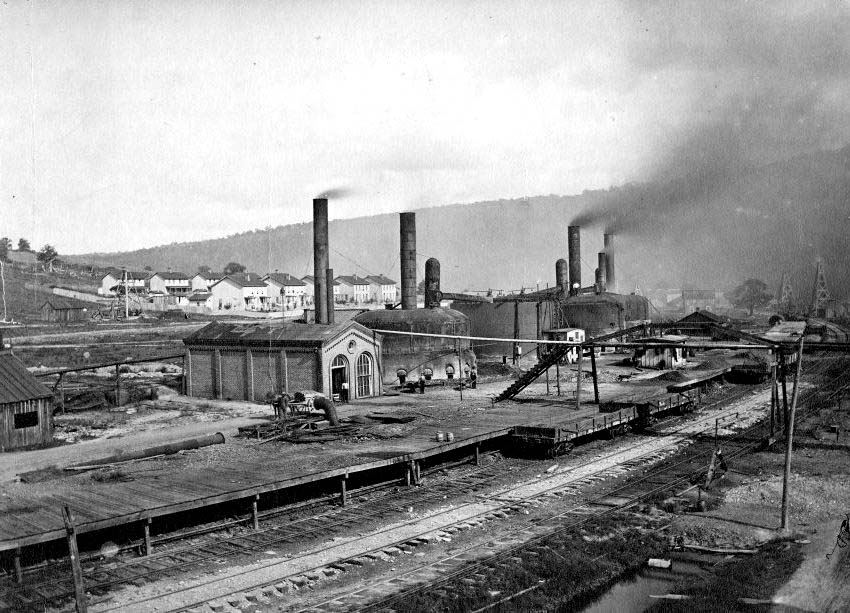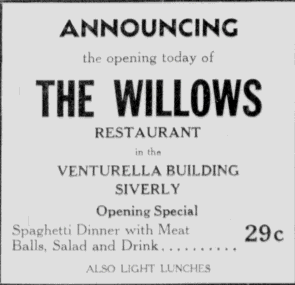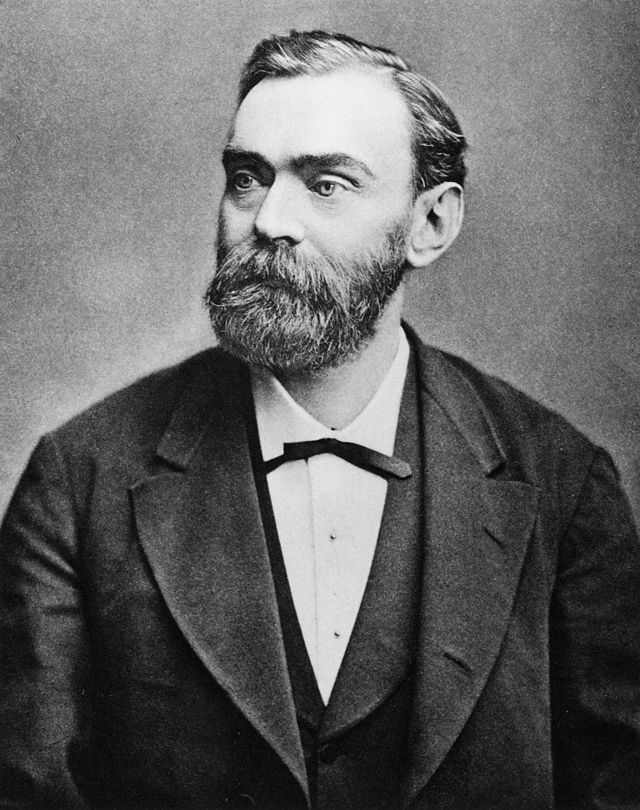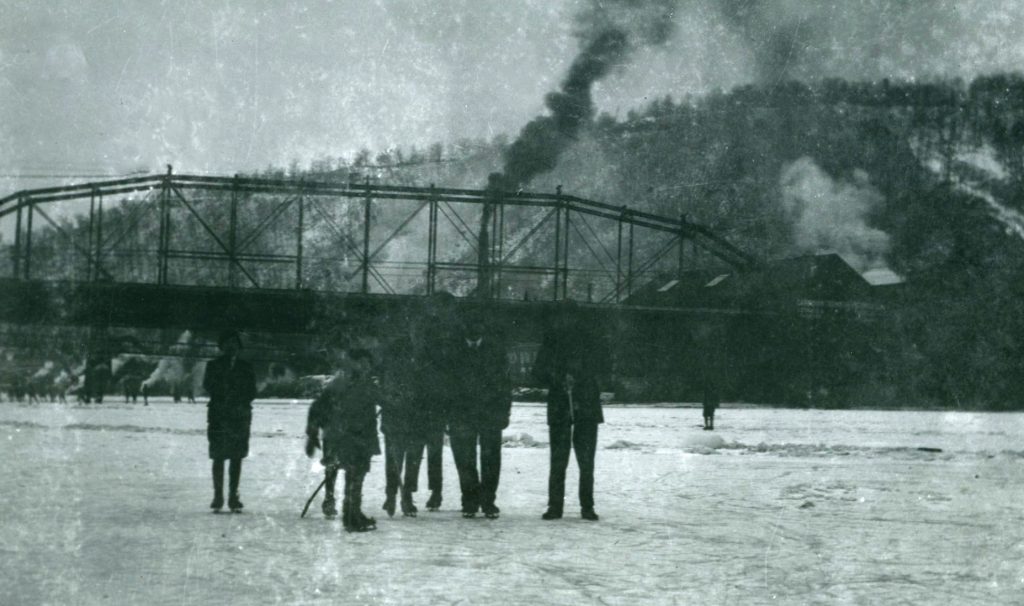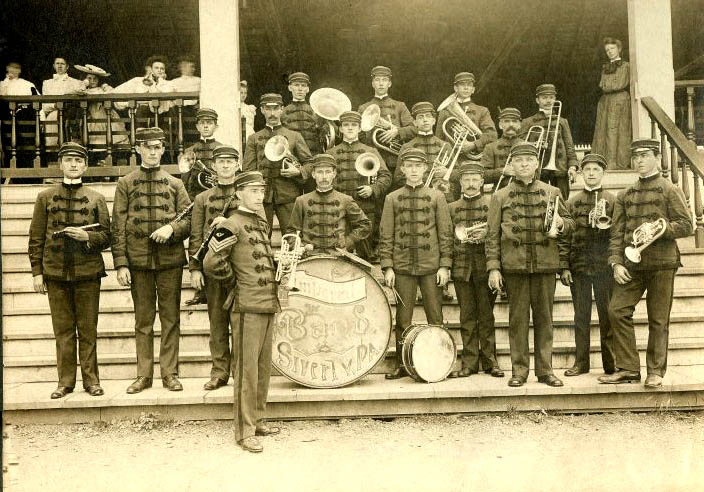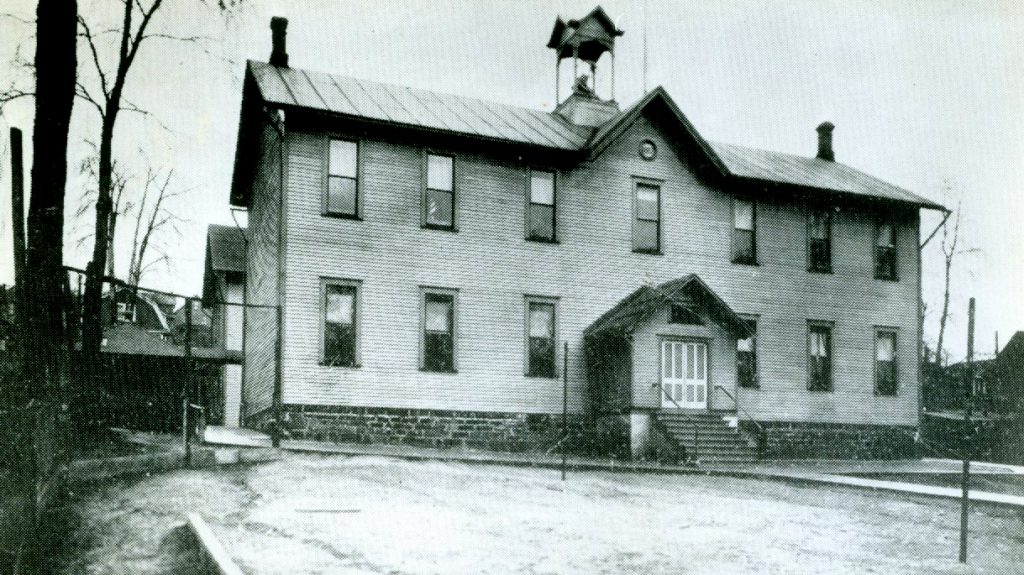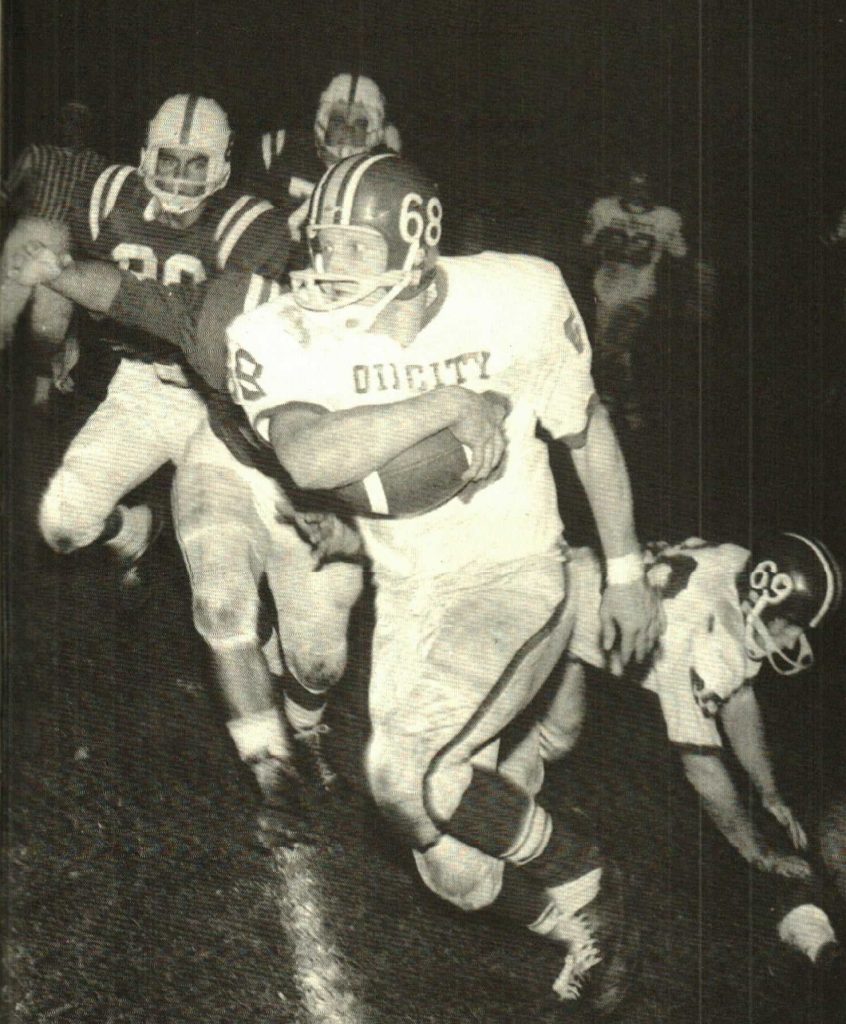Siverly
- Judy Etzel
- March 17, 2023
- Hidden Heritage
- 11018
Siverly, one of Oil City’s most unique neighborhoods, was the last one to give up its independence as a separate borough when it finally merged with the City of Oil City in 1910.
There are several unusual claims as to the riverfront community – it once boasted the largest inland refinery in the world; it claimed a factory that was the largest manufacturing plant in the world for oil and gas field equipment; many of its homeowners held jobs that helped revolutionize the energy industry; and it had its own brand of residents who made headlines on a variety of topics, ranging from an internationally known mathematician to one of the most talented football players to ever come out of the Oil Valley.
Growing up in Oil City, you had to have a specific occasion to go to Siverly because the main street was a dead-end road at the last Oil Well building. Those “occasions” ranged from going to work at the sprawling Oil Well property, enjoying a leisure time at the Siverly boat house, dining at Falco’s or relaxing with a social beverage at the Willows.
One of the most distinctive Siverly-created public spectacles was evident at the old Oil City High School – the immense traffic jams as school was letting out at the same time Oil Well’s dismissal whistle was sounding. The intersection of Colbert and Spring was a sea of cars, buses and pedestrians every weekday shortly after 3 pm.
Siverly also typified strength – the strength of making big heavy things in big cavernous plants and the strength of family and character in a close-knit and safe neighborhood.
How It Started
The earliest survey of land that included what would become Siverly village was made in 1802 by Samuel Dale, hired by the county to establish the county borders. Included in the survey were two plots claimed by brothers Noah and Jesse Sage. They settled their families along the river and planted two orchards. They moved on after a few years and vacated the land.
Meanwhile, a man was moseying down from New England and he would put a community called Siverly on the map. Abraham George “A.G.” Siverly, born in 1769 in New York City to German immigrants, was a sailor and later cabinet maker. He married Susanna Thayer and they found their way to Pinegrove Township in 1819.
However, a wrinkle developed when nearby landowners challenged Siverly’s title to his Pinegrove property in 1825. That forced him to move his family, which included sons Philip and Milton, to what had been the Sage property along the river. They built a log cabin and were soon joined by several other families in the riverside community.
The small settlement was dramatically impacted by the early timber industry. The 1855 “Allegheny Pilot” rafters’ book mentions Siverly. The advice was “to keep to the north side of the river in passing Alcorn Island and that direction prompted many of the timber rafters to pull off for an overnight rest at Siverly.
The village grew quickly enough that the elder Siverly was elected as Justice of the Peace. A few years later in 1839, he accepted the job as postmaster of the Cornplanter Post Office, making him the city’s first postmaster. He was in charge of delivering mail brought north by a carrier on horseback from Franklin once a week.
However, Siverly served only one term as postmaster before deciding to move, for some reason, to Iowa where he died at the age of 70. But, two of his 14 children – Philip and Walter – stayed put and took it upon themselves to open up the village of Siverly. In 1862, they laid out streets and drew up regulations.
The First Big Thing
It was in this lackadaisical period that the small Siverly settlement drew a major business – the Imperial Oil Refinery. In 1872, entrepreneur Jacob Vandergrift built a refinery in the northern end of Siverly village along the river. A year later, it was in full production at 1,000 barrels a day and boasted a wax works and barrel factory as well.
Because employees chose to live in the community where they worked, a housing boom ensued. The village’s first major street was named Imperial Street (now Colbert) to reflect the plant’s impact.
Things got formal in August 1874 when Siverly was incorporated as a borough with Walter Siverly, Abraham’s son, chosen as first burgess.
One generation after Abraham and Susanna set up housekeeping in a spot that would later bear his name, Siverly was sizzling. By 1880, it boasted a population of 667 residents. It was a major stop on the Western New York and Pennsylvania Railroad, boasted a large public school, claimed a massive refinery, built a Methodist Episcopal Church and more.
One of its triumphs, according to early histories, was “its practical prohibition of the liquor traffic “ – it was a legacy helped no doubt by the formation of the Siverly Women’s Christian Temperance Union and the Siverly Sons of Temperance.
Siverly Keeps Growing
All this was happening in the small riverfront borough as its larger counterpart to the south, Oil City, was booming. The city had combined the North Side, Albion, Downingtown, Laytonia, Lee Town and Venango City into the incorporated City of Oil City by 1871.
Not Siverly, though – it would not merge with the city until the spring of 1910. A key ingredient in Siverly’s prosperity was the railroad that pegged the borough as a major engine switching site. That prompted the majority of the railroad employees to live in Siverly – the community claimed the informal title of “the railroaders village.”
Enjoying its independent heyday, Siverly was uniquely represented in the oil industry by one of its namesakes. Walter Siverly, the grandson of founder Abraham Siverly, was a petroleum broker with an unusual talent – at the age of 58 in 1890, Walter was described in scholarly journals as “one of the most proficient mathematicians in the state”. His contributions to scientific papers on problems and solutions in higher mathematics earned him an honorary Doctor of Philosophy degree in 1888 from the North Carolina College.
Changes At The Refinery
Meanwhile, there were developments at the Imperial Refinery in Siverly. Benjamin Brundred, former operator of the Union Refinery on Union Street, was named by Standard Oil to oversee the Imperial Refinery.
At one time, the Imperial Refinery was the largest inland refinery in the U.S. and even though the plant was located in Siverly Borough, Oil City claimed it as its own in an 1887 Beers Atlas listing.
However, the boom times at Imperial were not to last. In 1894, Standard Oil shuttered the refinery and the property was abandoned. That closing, though, would pave the way for a much greater economic turn of events – Oil Well Supply.
By 1910, Siverly listed 1,616 residents, nearly three times the number only 30 years earlier. It flourished in the early 1900s as it claimed Oil Well Supply and the railroad as major employers. People chose to live in the small community for many reasons – they could walk to work, they had easy access to the river and all its recreational opportunities, they could stroll into downtown Oil City to shop.
In Siverly, Imperial Street (now Colbert) was the avenue of commerce.
DID YOU KNOW?
One of the most popular routes to travel to work in Oil City years ago didn’t involve city streets. Residents would regularly cross over the ice-covered Allegheny River enroute from home to work & back again. In 1912, newspaper accounts described the smooth ice covering on the river & reported that hundreds of people were taking advantage of that to cross over the river to shop, work or go to school. “Between the old Petroleum Bridge and the Pennsylvania Railroad Bridge are a dozen or more trails used by Siverly residents or upper South Side residents,” noted the newspaper. In addition, employees of the National Transit shops & Joseph Reid Engine works along Main Street chose the frozen river as their crossing of choice near the suspension bridge piers. It was, reported the newspaper, a “veritable ice bridge.” In addition, the river was a popular site for numerous skating parties.
Records from 1906 show a lengthy list of Siverly businesses – a driller, three oil producers, a druggist, two dry good stores (Gardiner’s at 242 Imperial Street and Krug Brothers at 158 Imperial Street), two general stores, five grocers, St. Charles Hotel, a junk dealer, Florence Trax’s meat market, a hardware store, the Imperial Band headquarters, a barber, four boarding houses, a boot/shoemaker, three carpenters, two churches (Bethel Methodist Episcopal and Free Methodist), a cigar store, George Schaible’s stone contracting business, four dressmakers, three nurses, three teamster groups, Edwards Woolen Mills and, of course, Oil Well Supply.
The list of Siverly professions showed a sturdy, hands-on workforce – Siverly was clearly a neighborhood that made things.
Residents also thrived on recreational pursuits, in large part because of the proximity of the river.
In 1900, residents built a large boat house, complete with a dance hall, kitchen and dining room at the foot of Willow Street. That same summer, though, a storm knocked it loose from its moorings and the building was destroyed. Undeterred, a group salvaged much of the wood, purchased a lot at 12 Wabash Street, and built another one.
It was also at that time that shoemaker and Siverly resident George Thomas, who served as a drillmaster in the Union Army’s Zouaves unit during the Civil War, organized a drill team. It was open to men and boys of Siverly. The drill team performed with the Cottage Hill Fife and Drum Corps and their joint appearances drew large crowds.
The 1920s and 1930s
In the two decades following its annexation to Oil City, Siverly grew and prospered. It was a residential place of choice for hundreds of employees at Oil Well Supply and the railroad.
A housing spurt had created good, solid homes laid out in an orderly fashion along quiet streets.
The community also boasted an immediate recreation spot, the river, and a railroad juncture that allowed passengers to embark for a ride up along the Allegheny.
There were lots of businesses, too. The list included Wade Gulick’s Grocery, Ross Cutter’s grocery, Joseph Tamburino’s Grocery and shoe repair shop, the Great A & P Tea Co. store, Percy Ashton’s shoe shop, barber Charles Wrhen, Hiram Bean’s meat market, Joseph Falco’s billiards parlor, Cosimo Venturella’s grocery, the Siverly Restaurant and more.
Booming In The War Years
Siverly, home to Oil Well Supply, was booming in the 1940s and World War II. The huge Siverly company made a wide array of defense items while continuing to ramp up production of oil and gas equipment. As a result, private businesses as diverse as James C. Marshall’s service station, Vengold Dairy Products, Otto Whaley’s grocery, Joe and Mary Falco’s restaurant, and others prospered, too.
By the early 1950s, Siverly had gained fame on several fronts – Falco’s Restaurant was pulling in patrons from throughout the city; Joe Venturella’s Golden Dawn Market had a very popular deli and fresh meat counter; Caruso’s Dairy Mart boasted it had the best ice cream in town.
There was one business, too, that was well known not particularly for the services it provided but for one of its family members – it was Shaughnessy Rug Cleaning in the former Red & White Store on Colbert. Jimmy Shaughnessy of Oiler football fame brought new recognition to the city’s small neighborhood to the north.
However, the community’s good fortune was to suffer a major blow because of dramatic setbacks at Oil Well. By the mid-1980s, Oil Well had dramatically scaled back its workforce and eventually closed the Siverly plant. The City of Oil City bought the 36-acre parcel in 1988 to use an industrial park.
Written by Judy Etzel with research by Kay Dawson and design by Natalie Cubbon.
HIDDEN HERITAGE IS SPONSORED BY:
Jack Eckert & Susan Hahn
— In Memory of Carole Eckert —
Support This Project
Donations to the library are appreciated to help offset printing costs & make this project possible! Want to become a sponsor? Email us at promotions@oilregionlibraries.org to get started!
Make a Donation
